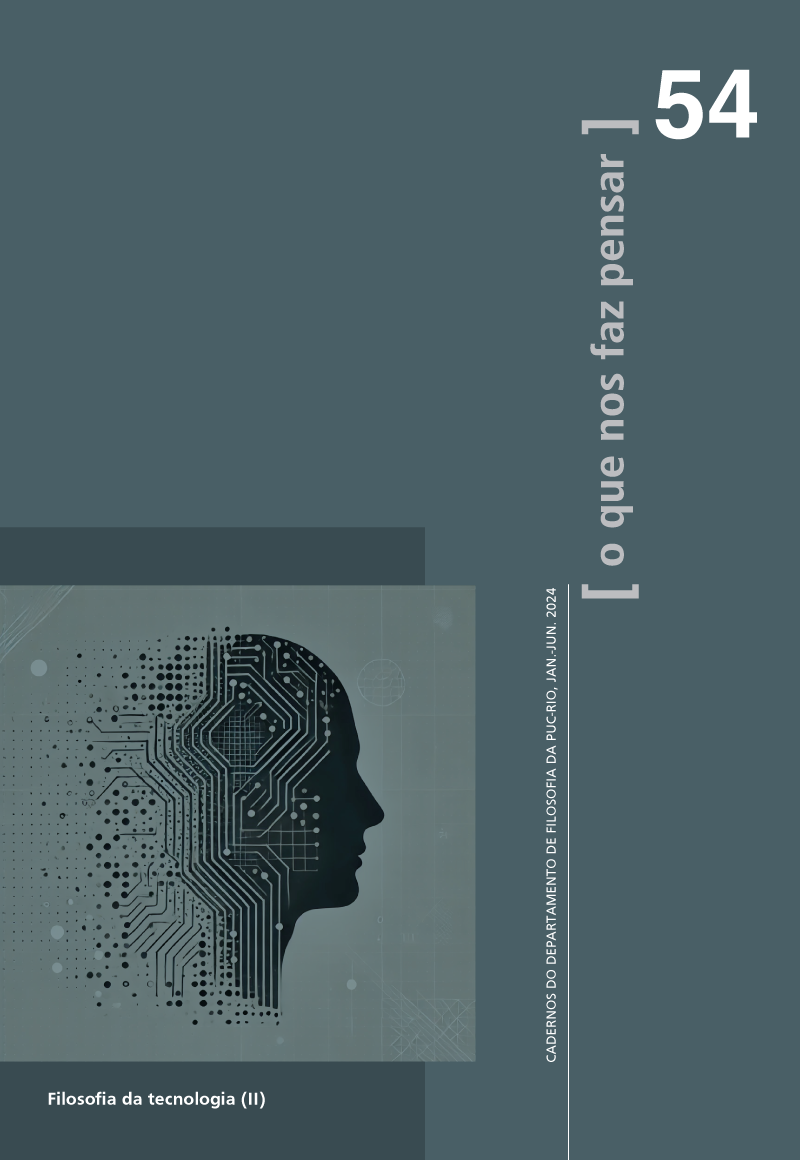Artificial intelligence and mimetic regression: a few words about a Volkswagen commercial
Main Article Content
Abstract
This is an analysis of the Volkswagen car manufacturer's commercial in which the singer Maria Rita performs a duet with her mother, Elis Regina, resurrected thanks to the action of artificial intelligence (AI). The central hypothesis is that all the controversy surrounding the advertisement, which has largely been fought on social networks, is anchored in the fact that there is an aesthetic choice called here mimetic regression, so that all the criticism of the use of AI in this case resonates with Plato's criticism of mimesis in book X of The Republic. The article goes on to discuss contemporary authors, in particular Jean Baudrillard and Bernard Stiegler, who each in their own way mobilize the Platonic conceptual framework to think about the situation of the image in contemporary times, arguing that the antidote to mimetic regression would not be a "return to the real", but encouraging artists to learn how to program in order to propose a creative use of the images produced by AI.
Article Details

This work is licensed under a Creative Commons Attribution-NonCommercial 4.0 International License.
Copyright Notice
The author of the article or book reviews submitted and approved for publication authorizes the editors to reproduce it and publish it in the journal O que nos faz pensar, with the terms “reproduction” and “publication” being understood in accordance with the definitions of the Creative Commons Attribution-NonCommercial 4.0 International license. The article or book reviews may be accessed both via the World Wide Web – Internet (WWW – Internet), and in printed form, its being permitted, free of charge, to consult and reproduce the text for the personal use of whoever consults it. This authorization of publication has no time limit, with the editors of the journal O que nos faz pensar being responsible for maintaining the identification of the author of the article.
References
Baudrillard, Jean. Simulacres et simulations. Paris: Galilé, 1981.
Chul Han, B. A salvação do belo. Tradução Gabriel Salvi Philipson. Petropólis : Vozes, 2019 (2015).
Flusser, Vilém. O mundo codificado. Tradução de Raquel Abi-Sâmara. São Paulo, Cosac Naify, 2007.
Krauss, Rosalind. Marcel Duchamp ou o campo imaginário. In: O fotográfico. Trad. Anne Marie Davée. Barcelona: Gustavo Gili, 2002.
Mondzain, Marie-José. Le commerce des regards, Paris, Seuil, 2003.
_________________. Imagem, ícone, economia: as fontes bizantinas do imaginário contemporâneo. Tradução de Vera Ribeiro. Rio de Janeiro: contraponto, 2013 (1996).
Stiegler, Bernard. The discret image. In: Echographies of television: filmed interviews. Translated by Jennifer Bajorek. Cambridge: Polity Press, 2002 (1996).

